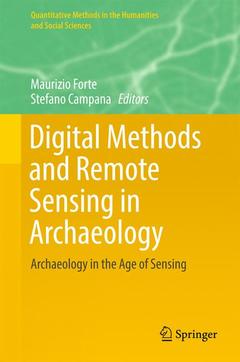Description
Digital Methods and Remote Sensing in Archaeology, Softcover reprint of the original 1st ed. 2016
Archaeology in the Age of Sensing
Quantitative Methods in the Humanities and Social Sciences Series
Coordinators: Forte Maurizio, Campana Stefano
Language: English
Subject for Digital Methods and Remote Sensing in Archaeology:
Publication date: 02-2017
Support: Print on demand
Publication date: 07-2018
Support: Print on demand
Description
/li>Contents
/li>Biography
/li>Comment
/li>
Shares current research from an innovative field with immediate implications for scholars working in history, archaeology & geoarchaeology, geography, cultural heritage methodology, and the earth sciences more broadly
Represents cross-disciplinary topics at the intersection of the humanities and hard sciences
Includes topics for collecting, interpreting, and sharing data from remote and close range sensing, 3D modeling, spatial technologies, and virtual landscapes ?
Includes supplementary material: sn.pub/extras




